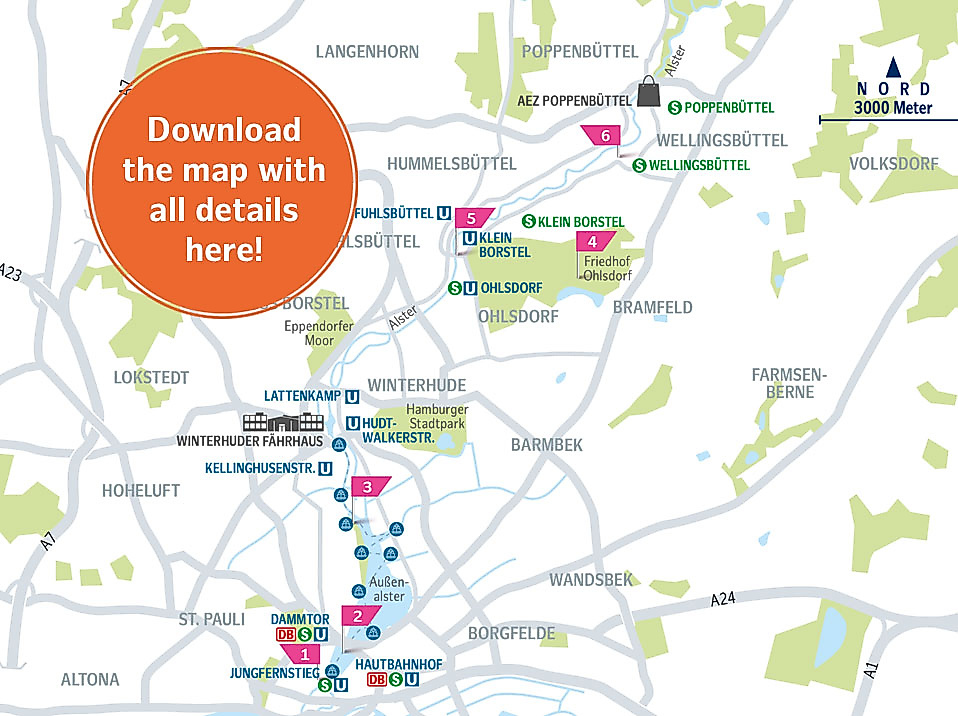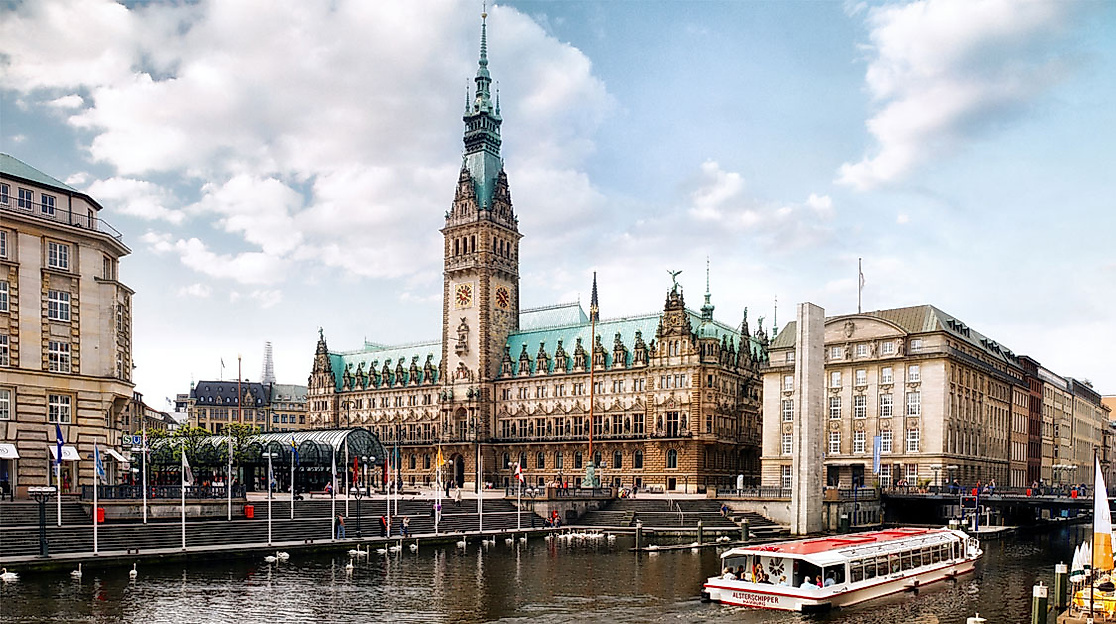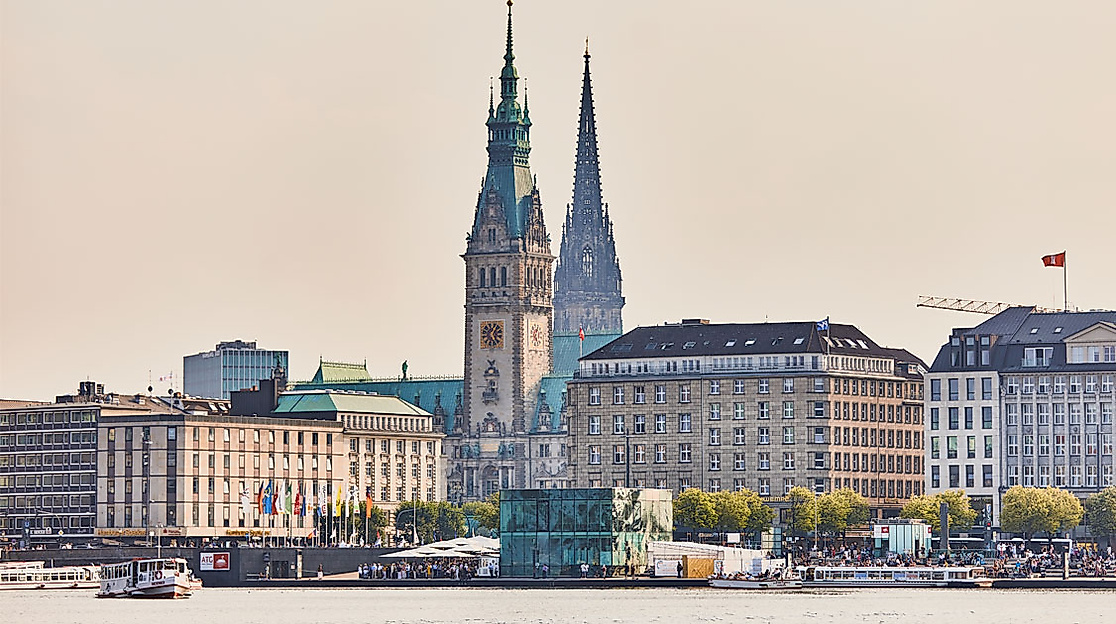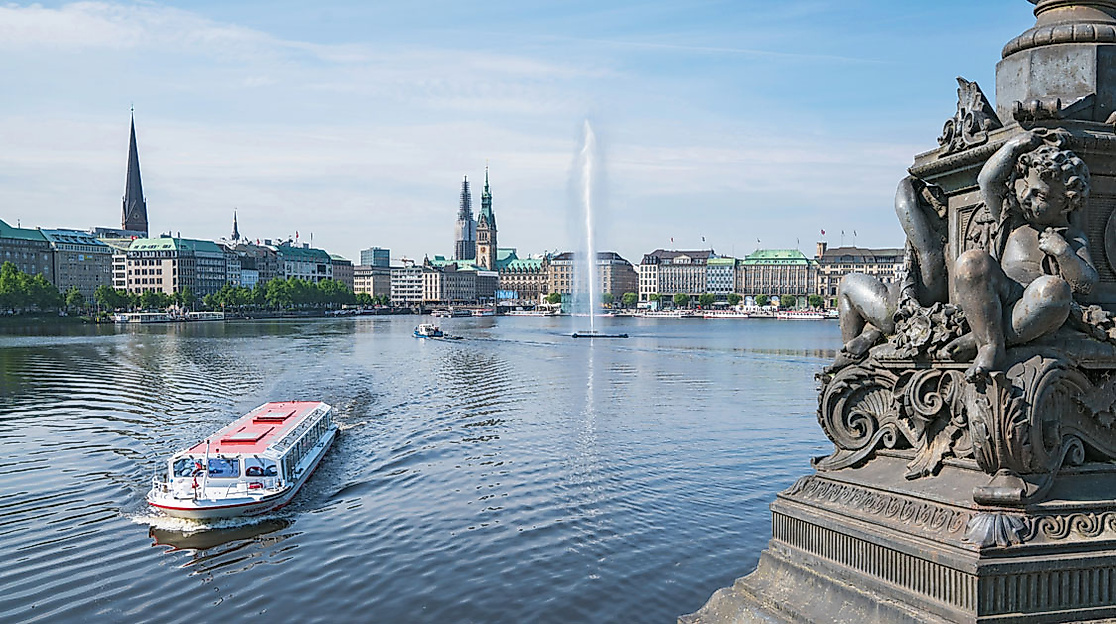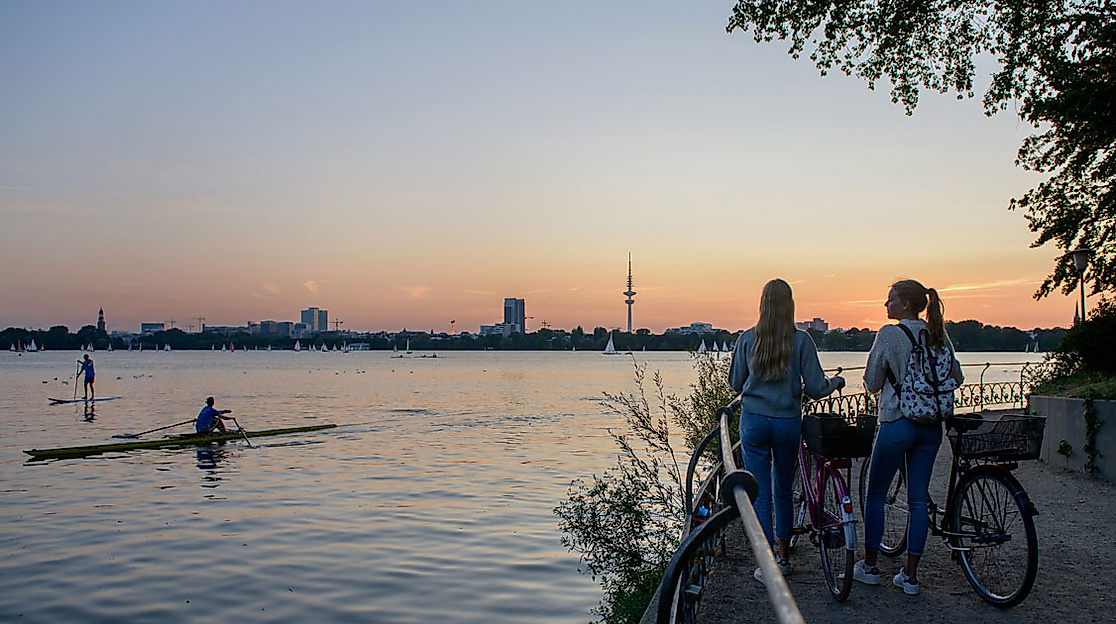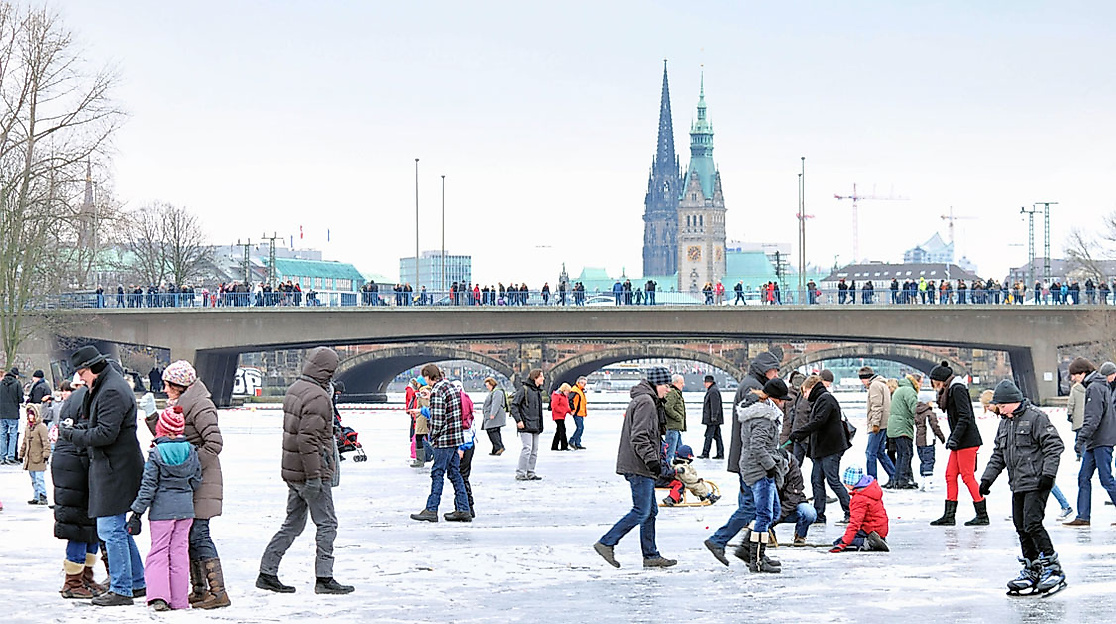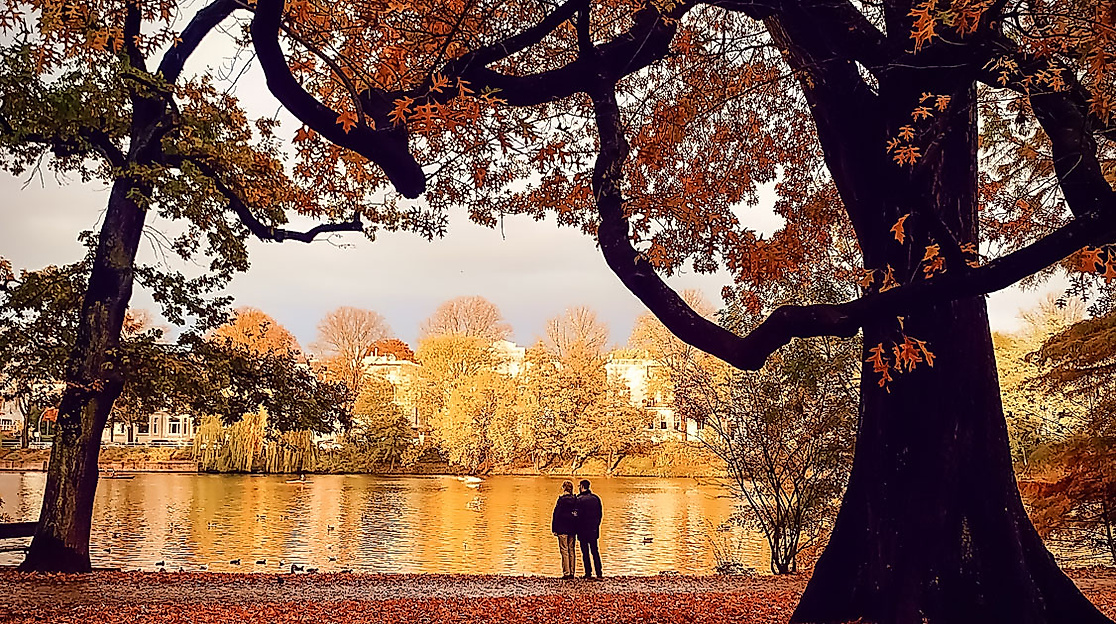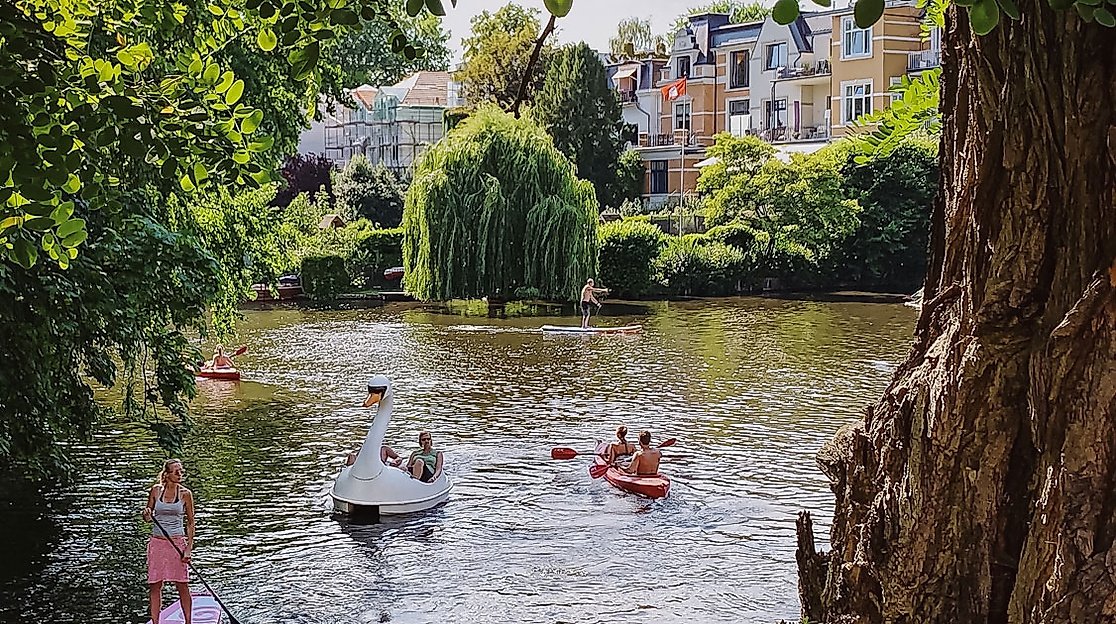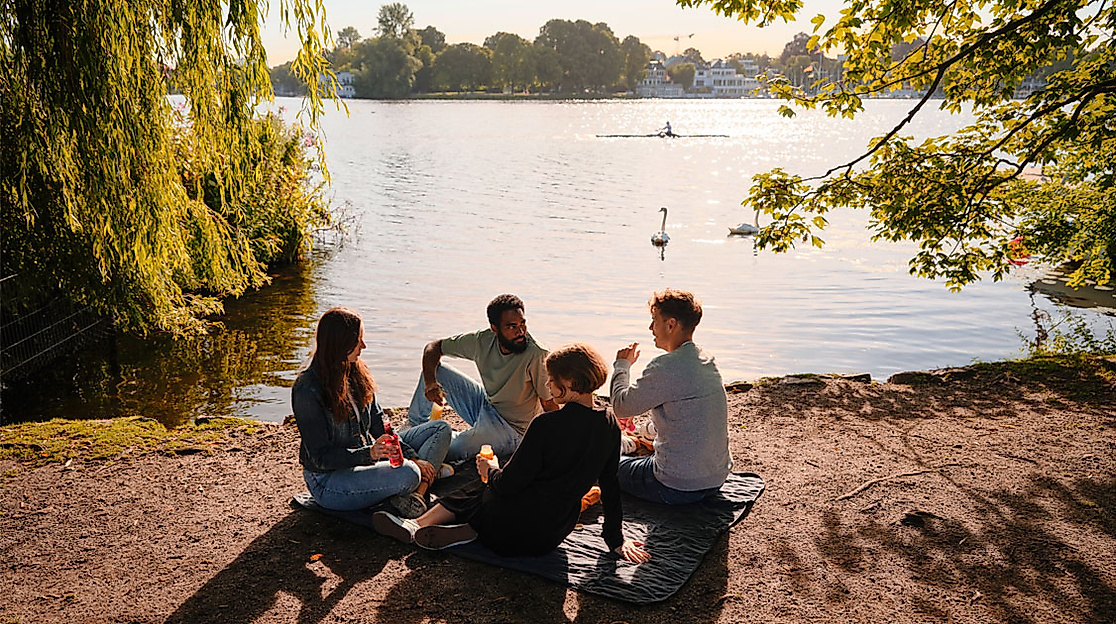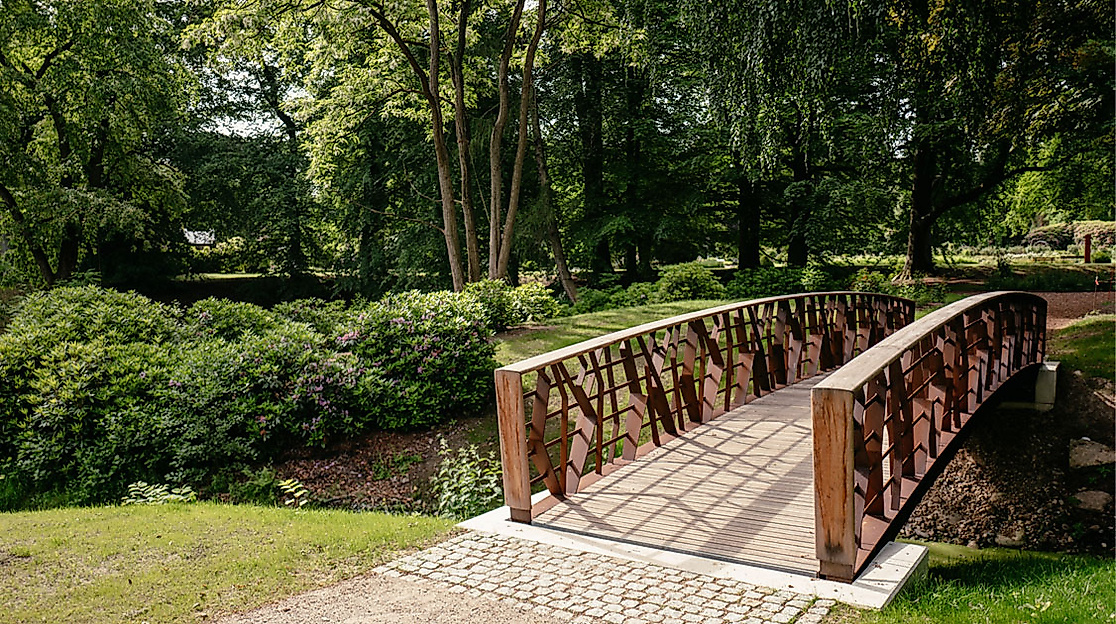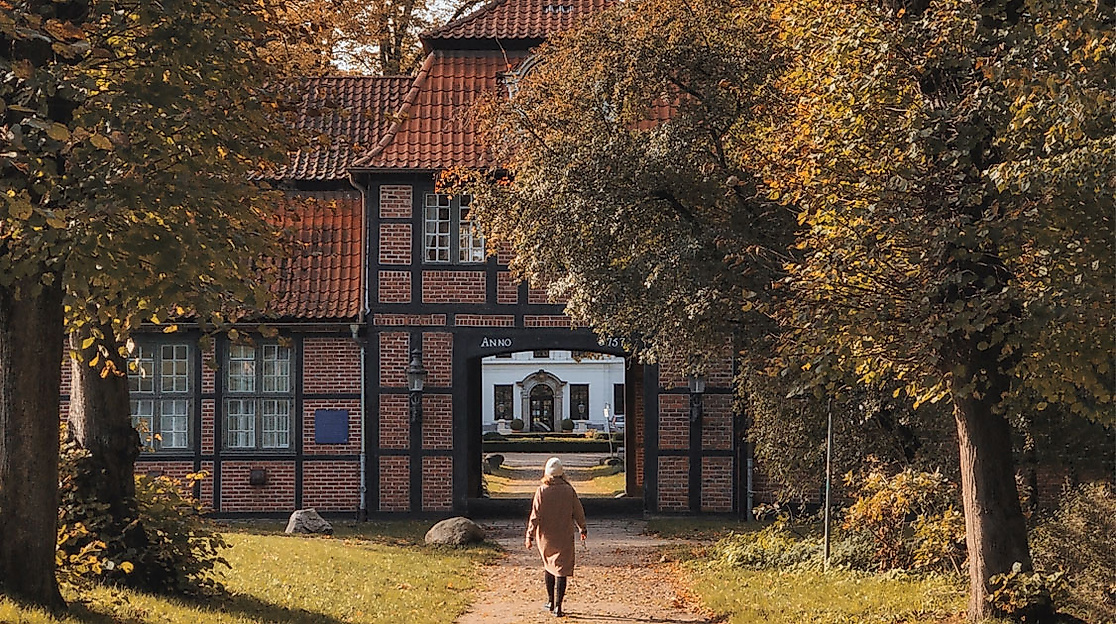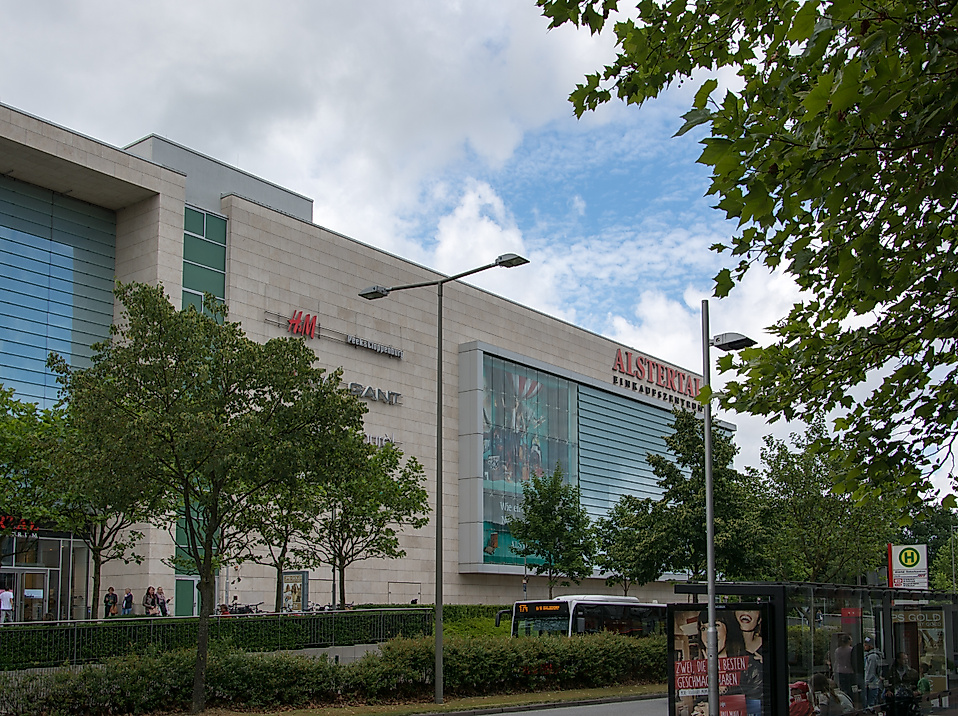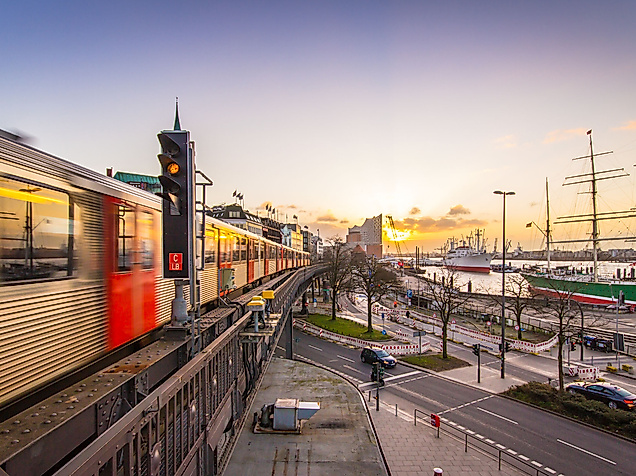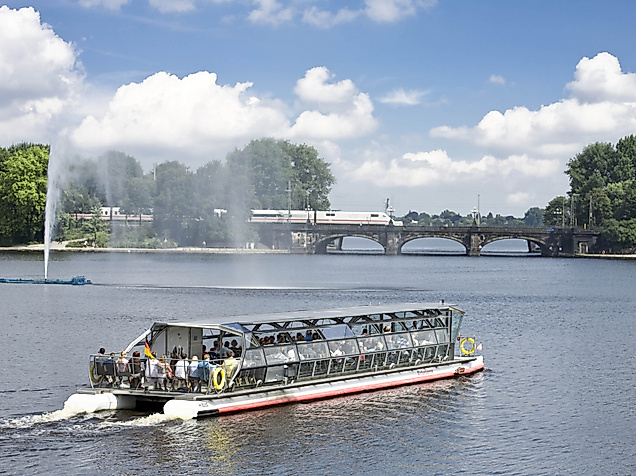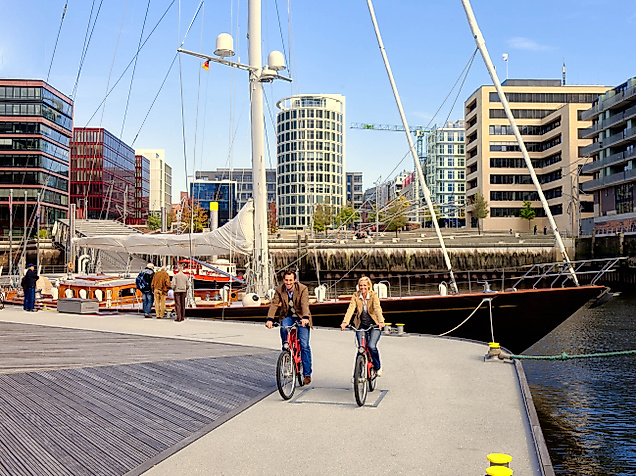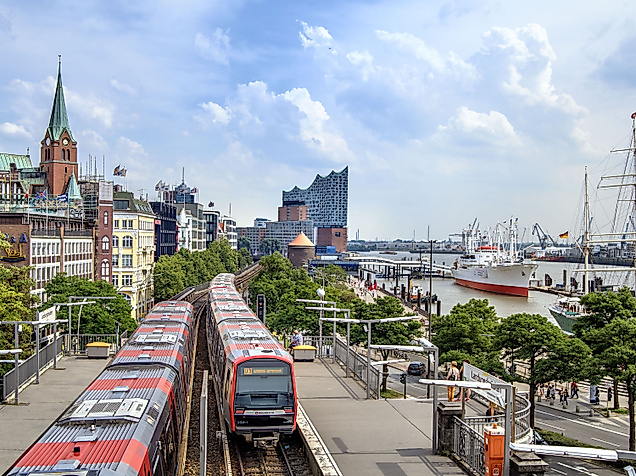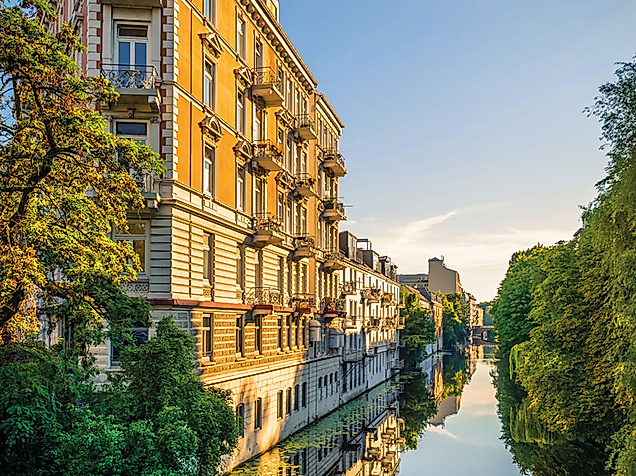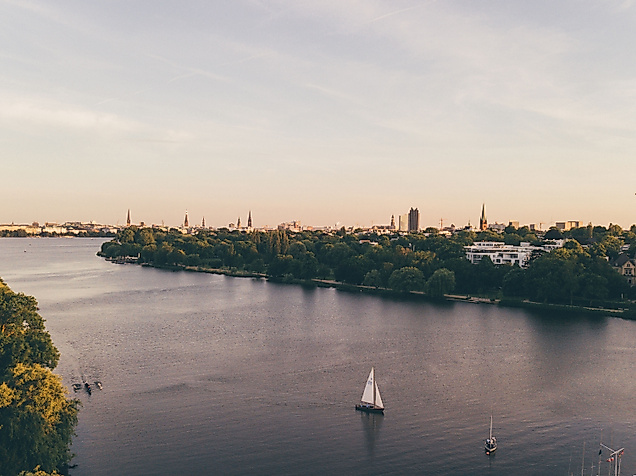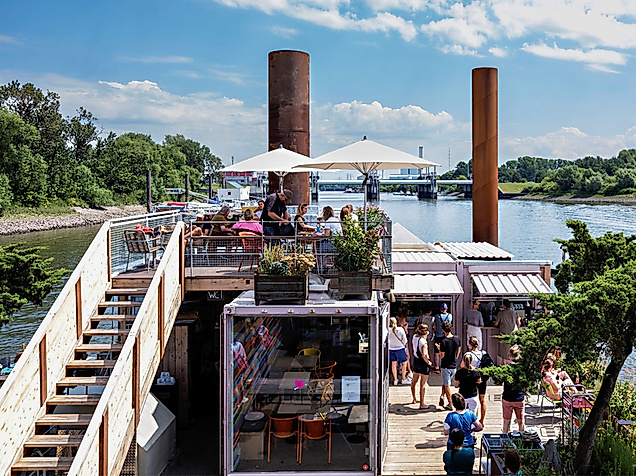
Alster route
- Moving in nature
- Out and about by the water
- Fine residential areas
The route in a nutshell
This northward route from Jungfernstieg to Poppenbüttel along the Alster has a length of just under 20 km. A visit to Ohlsdorf Park Cemetery would extend the route accordingly. Likewise, you may want to enter or exit the route at an earlier or later stage using one of the numerous S-Bahn and U-Bahn stations along the way. The route is best done on foot.
Starting your hike with a panoramic city view
You start this 20 km long route at Jungfernstieg, in the heart of Hamburg’s city centre. Already in the 17th century, this historic street served as a boulevard for well-to-do Hamburg citizens and was later Germany’s very first street to be asphalted. From here, you can visit Hamburg’s magnificent town hall or watch the fountain on the Alster, which reaches a height of up to 40 metres. Sitting on the steps by the water, you can watch the Alster barges taking off and returning. At Neuer Jungfernstieg, on the west bank of the Inner Alster Lake, you walk towards the Outer Alster Lake. Along its west bank you can find a quiet footpath right on the water. As you walk along this path, you will see sailing boats, rowing boats and canoes, catch a glimpse of the famous Alster swans, and much more. To your left, a beautiful green belt stretches along the water. In summer, this is the place where locals like to spread out their picnic blanket. Just off the lake shore, you can see a string of stately townhouses. It is fair to say that the Outer Alster Lake is a real paradise for outdoor sports: the jogging route around the lake has cult status, the lawns are dotted with sports and play facilities, and various rental stations for sailing boats, pedal boats and canoes can be found along the way. Sometimes, in particularly cold winters, the Outer Alster Lake freezes and Hamburg’s locals go ice skating there. That said, skating is only permitted once the average thickness of the ice is 20 centimetres – and the last times this happened was in 1997 and 2012.
Moving through splendid residential quarters
Arriving at Krugkoppelbrücke in the north of the Outer Alster, you will enjoy a last view of the dammed part of the Alster and the silhouette of the city. Following the course of the Alster, you will then continue northwards for about 1.6 km along Leinpfad. At the interface of the urban quarters of Winterhude, Harvestehude and Eppendorf, this lovely residential street is lined with beautiful period apartments. On the water, you will discover sports enthusiasts in their boats, and local residents here even have direct access to the water from their gardens. Back in the 19th century, the Alster served as a transport route for goods. At the time, small barges would be pulled upstream by specialist workers. At the end of Leinpfad you can find the Winterhuder Fährhaus, a popular theatre and comedy stage that boasts its own berth for Alster boats.
In case you don't feel like walking any further, you can take the opportunity to be chauffeured back towards the Outer Alster by launch. On the other side of the street you will see the new glass building of the Winterhuder Fährhaus. You will now continue west of the Alster and explore the beautifully landscaped Hayns Park and the Eppendorfer Mühlenteich pond – the winter home of Hamburg's much-loved Alster swans. At Meenkwiese you once again cross the Alster and stroll through the quiet, green district of Alsterdorf. As you walk, you enjoy the fine Wilhelminian-style facades and the well-kept allotment gardens – always right by the water.
Completing the journey amidst unspoilt nature
After your 4 km hike through Alsterdorf, you will arrive in Ohlsdorf. Here you can truly immerse yourself in nature. If you like, take a detour to Ohlsdorf Cemetery – with 400 hectares of land it is Hamburg’s biggest green space and the largest park cemetery in the world. A walk through this treasured natural environment is certainly well worth it.
From here, you still have about 7 km to walk before you arrive in Poppenbüttel. You will first pass the Fuhlsbüttel lock. Ever since it was last reconstructed, it no longer serves as a lock, but as a weir to regulate the water level. A fish ladder enables fish to passage over via small basins staggered opposite each other. As you walk further, you will spot more of such facilities that help fish migrate. Finally, the canalised part of the Alster comes to an end and the environment turns more pristine and untamed.
The lush forest vegetation and a fantastic interplay of natural colours will make you forget you are still in Hamburg. After another stretch of just under 5 km, you will reach the historic Wellingsbüttler Torhaus. Built in 1757, this beautiful half-timbered house is a popular venue for cultural events. As you take a little detour to Wellingsbüttel, you will find that the path is quite hilly by Hamburg standards – that’s because this landscape was formed by terminal moraines. And thus you will get your fair share of exercise as you continue your journey upwards towards Poppenbüttel.
From Poppenbüttel S-Bahn station, you can now take the S1 straight back into Hamburg’s city centre. Along the route, you have several opportunities to get back to the city centre using the U-Bahn (U1) or the S-Bahn (S1).
As a route planner, we strive to put together particularly diverse routes through Hamburg's most beautiful areas. Did you like our Alster route? We look forward to receiving your feedback. To discover even more unique corners of Hamburg, take a look at our city map.
